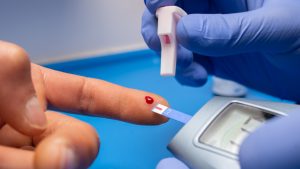Fatty liver, also known as hepatic steatosis, is a condition where fat accumulates in the liver. While it may initially be asymptomatic, understanding its aspects is key to maintaining optimal health. In this article, we’ll explore what fatty liver is, its causes, symptoms, and diagnostic methods, as well as how to manage it effectively.
What is Fatty Liver?
Fatty liver is defined by an excess accumulation of fat in the liver, representing more than 5-10% of the organ’s weight. This condition can be classified into two main forms:
1. Non-Alcoholic Fatty Liver Disease (NAFLD)
NAFLD is not related to alcohol consumption and is quite common. It is associated with metabolic conditions, but with the right approach, it can be effectively managed to maintain good liver health.
2. Alcoholic Fatty Liver Disease (AFLD)
AFLD is related to prolonged alcohol consumption. Addressing this form with a balanced approach and reducing or eliminating alcohol consumption can lead to significant improvements in liver health.
Causes of Fatty Liver
Fatty liver can have various causes, which often interrelate. Here are the most common ones:
1. Obesity
Obesity is a key factor in fatty liver. Excess body fat can lead to fat accumulation in the liver. Insulin resistance, which often accompanies obesity, also plays a role in this condition. With lifestyle changes like a healthy diet and regular exercise, it is possible to maintain a healthy liver.
Additional Research:
- A study published in Hepatology highlights that abdominal obesity is associated with a higher risk of fatty liver, but it also shows that weight management can positively impact liver health (Hepatology, 2022).
2. Type 2 Diabetes
People with type 2 diabetes may experience fatty liver due to insulin resistance. Improving blood glucose control through a balanced diet and regular exercise can help maintain liver health.
Additional Research:
- The journal Diabetes Care indicates that many people with type 2 diabetes also have fatty liver, but with a comprehensive health approach, both aspects can be effectively managed (Diabetes Care, 2021).
3. Unhealthy Diet
A diet high in refined sugars and saturated fats can contribute to fatty liver. Opting for a diet rich in fruits, vegetables, and healthy fats can support liver health and improve overall well-being.
4. Excessive Alcohol Consumption
Excessive and prolonged alcohol consumption can influence fat accumulation in the liver. Reducing or eliminating alcohol intake can promote recovery and support a healthy liver.
5. Medications and Supplements
Some medications and supplements can influence fat accumulation in the liver. Consulting with a healthcare professional about side effects and alternatives can be beneficial.
6. Genetic Disorders
Certain genetic disorders may predispose individuals to fat accumulation in the liver. Early diagnosis and proper management can help maintain optimal liver health.
Symptoms of Fatty Liver
While fatty liver may not present evident symptoms in its early stages, some signs may appear. These include:
1. Fatigue and Weakness
Fatigue may be associated with fatty liver, but with a balanced diet and exercise routine, energy levels and overall well-being can improve.
2. Abdominal Discomfort
A mild discomfort in the right side of the abdomen can occur and is a sign that the liver might benefit from lifestyle adjustments.
3. Unexplained Weight Loss
If you experience unexplained weight loss, it’s a good idea to consult a healthcare professional to adjust your health plan as needed.
4. Jaundice
Though less common in early stages, a slight yellowing of the skin and eyes can be a sign that the liver requires attention and lifestyle adjustments.
5. Itching
In some cases, itching may occur. Adjusting diet and lifestyle can help alleviate this symptom.
Diagnosing Fatty Liver
Diagnosing fatty liver involves various methods that help provide a complete picture of liver health:
1. Medical History and Physical Examination
The doctor will review medical history and perform a physical examination to assess possible signs of fatty liver.
2. Laboratory Tests
- Liver Enzymes: Elevated liver enzyme levels can indicate inflammation, but they also provide guidance on supporting liver health.
- Lipid Profile: Assessing cholesterol and triglyceride levels can help tailor management plans.
3. Imaging
- Liver Ultrasound: This non-invasive technique is useful for identifying fat accumulation in the liver and provides a clear view of liver health.
- Computed Tomography (CT) and Magnetic Resonance Imaging (MRI): These provide detailed images that help assess liver condition.
- Elastography: A specialized technique that measures liver stiffness and helps identify areas for improvement.
4. Liver Biopsy
In specific cases, a liver biopsy can offer a detailed view of liver health. This technique provides valuable information to tailor the management approach.
Prevention and Management of Fatty Liver
Managing fatty liver is possible with positive lifestyle changes. Here are some key tips:
1. Healthy Diet
- Reduce Sugars and Saturated Fats: Opt for a diet rich in fruits, vegetables, whole grains, and healthy fats to support liver health.
- Portion Control: Eating appropriate portion sizes and avoiding excess calories is essential for overall well-being.
2. Regular Exercise
- Physical Activity: Regular exercise, such as walking, swimming, or cycling, helps reduce total body fat and improves metabolic health.
3. Moderation of Alcohol Intake
- Limitation: Reducing or eliminating alcohol consumption can be beneficial for the liver and contribute to better overall health.
4. Weight Management
- Gradual Weight Loss: Gradual and sustained weight loss can reduce fat accumulation in the liver and improve overall well-being.
5. Regular Medical Check-ups
- Medical Consultations: Regular check-ups with a healthcare professional to monitor liver function and receive personalized guidance.
Conclusion
Fatty liver is a condition that can be managed with a positive approach and lifestyle changes. With a balanced diet, regular exercise, and appropriate medical care, you can maintain liver health and promote overall well-being. Stay informed and proactive about your health to enjoy a full and healthy life.
E4 Helps you:
At E4, we’re dedicated to revolutionizing how people manage type 2 diabetes through our innovative E4 Alive program. Our team of specialists has joined forces to create a comprehensive solution aimed at empowering individuals to take charge of their health journey. With personalized support and resources tailored to each person’s unique needs, we make managing diabetes simpler and more effective than ever before.
E4 Alive offers a range of tools and resources to help you better understand and control your blood sugar levels. Our program provides personalized guidance to create a healthy eating plan and integrate regular physical activity into your daily routine. Plus, you’ll have access to a supportive community of individuals who understand your challenges and are there to offer encouragement and guidance every step of the way.
By joining E4 Alive, you can effectively manage your blood glucose levels, improve long-term glycemic control, reduce your risk of diabetes-related complications, and enhance your overall quality of life. It’s not just a program; it’s an opportunity to reclaim your health and vitality. Ready to start your journey to better health? Visit THIS PAGE to learn more about E4 Diabetes Solutions and the E4 Alive program.
To learn more about E4 Diabetes Solutions and the E4 Alive program, visit THIS PAGE.

Type 2 Diabetes: Is It Really Reversible?
A recent National Geographic article [link] explores how type 2 diabetes could be reversible with the right approaches. This condition, which affects millions of people worldwide, has long been considered a chronic and progressive disease. However, recent research challenges this perception and suggests that with lifestyle changes and the right approach, remission is possible. The

How Do GLP-1 Drugs Compare? A Breakdown of Ozempic, Mounjaro, and Trulicity
GLP-1 receptor agonists have revolutionized diabetes management, with drugs like Ozempic, Mounjaro, and Trulicity leading the market. But how do these medications compare in terms of effectiveness, side effects, and patient outcomes? Let’s explore their differences and what they mean for diabetes patients. Understanding GLP-1 Medications GLP-1 receptor agonists mimic a natural hormone that helps

Why Has Medicare Spending on Diabetes Medications Skyrocketed in 5 Years?
In the past five years, Medicare spending on diabetes medications has increased nearly fivefold, reaching $35.8 billion in 2023. This surge has been primarily driven by the growing use of GLP-1 drugs such as Ozempic, Mounjaro, and Trulicity. But what is behind this cost escalation, and how does it affect patients and the U.S. healthcare

The Gut Microbiota and Blood Sugar Control: A Hidden Connection
The human gut is home to trillions of bacteria that play a crucial role in digestion, immune function, and even metabolism. Recent research has revealed a fascinating link between the gut microbiota and blood sugar regulation, shedding light on how the balance of microbes in our intestines can influence diabetes risk and overall metabolic health.

The Dawn Phenomenon: Why Blood Sugar Rises While You Sleep
For many people with diabetes, waking up with high blood sugar levels can be frustrating—especially if they didn’t eat anything overnight. This early-morning spike in blood glucose is known as the Dawn Phenomenon, and it happens due to natural hormonal changes in the body. But why does it occur, and how can it be managed?

The Influence of Red Light on Blood: Can It Improve Diabetes?
Type 2 diabetes is a metabolic disease characterized by insulin resistance and elevated blood glucose levels. In the search for complementary alternatives to improve glycemic control, red light therapy has gained attention due to its potential to enhance circulation, reduce inflammation, and optimize cellular function. But what does science say about it? ✨ What is

